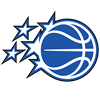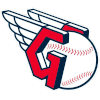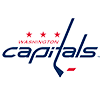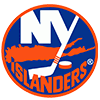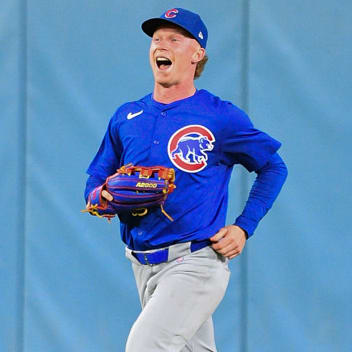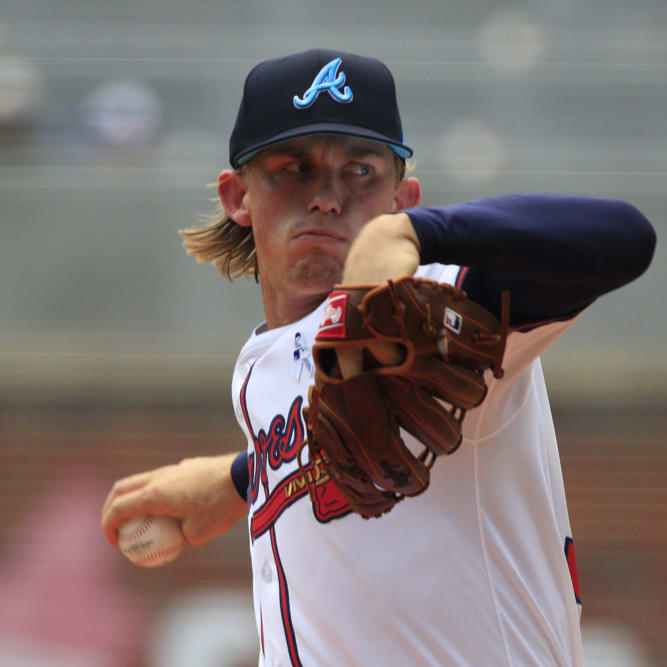Last week, I covered every job up for grabs in the National League this spring. This week, we move on to the American League. I'm continuing two adjustments I made to the format of last week's version. First, you'll find each player's NFBC ADP since the start of February next to their name. Second, I've rejected the tyranny of alphabetism in favor of ordering each team by their rank according to their total projected WAR at FanGraphs, as the strength of a roster matters much more than where the team falls in the dictionary when determining the value of an open spot. (Sorry, Aarhus Aardvarks fans.) Players with very late ADPs who play for one of the first handful of teams on this list could rise quite far should they wind up winning a starting role.
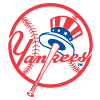 New York Yankees
New York Yankees
Shortstop: Oswald Peraza (302), Oswaldo Cabrera (350), Anthony Volpe (396), Isiah Kiner-Falefa (531)
Volpe may be the shortstop of the future in the Bronx, but just how soon the future will arrive is unclear. He's already reached Triple-A, albeit for 22 relatively unimpressive games in which he posted a 91 wRC+ while striking out more than 30 percent of the time. Even with that brief blip, he's still hit an excellent .269/.380/.524 (with a strikeout rate under 20 percent) over the last two seasons and is just 21 years old, so there's little reason to dull the hype. He's more likely than not to return to Triple-A to open the
Last week, I covered every job up for grabs in the National League this spring. This week, we move on to the American League. I'm continuing two adjustments I made to the format of last week's version. First, you'll find each player's NFBC ADP since the start of February next to their name. Second, I've rejected the tyranny of alphabetism in favor of ordering each team by their rank according to their total projected WAR at FanGraphs, as the strength of a roster matters much more than where the team falls in the dictionary when determining the value of an open spot. (Sorry, Aarhus Aardvarks fans.) Players with very late ADPs who play for one of the first handful of teams on this list could rise quite far should they wind up winning a starting role.
 New York Yankees
New York Yankees
Shortstop: Oswald Peraza (302), Oswaldo Cabrera (350), Anthony Volpe (396), Isiah Kiner-Falefa (531)
Volpe may be the shortstop of the future in the Bronx, but just how soon the future will arrive is unclear. He's already reached Triple-A, albeit for 22 relatively unimpressive games in which he posted a 91 wRC+ while striking out more than 30 percent of the time. Even with that brief blip, he's still hit an excellent .269/.380/.524 (with a strikeout rate under 20 percent) over the last two seasons and is just 21 years old, so there's little reason to dull the hype. He's more likely than not to return to Triple-A to open the year, however, giving the 22-year-old Peraza the chance to stake his own claim to the spot. He doesn't have Volpe's pedigree, but he's a good prospect in his own right and more than held his own (.306/.404/.429) in an 18-game taste of the majors last season. Cabrera is quite young (23) himself and hit fairly well in his 44-game debut, slashing .247/.312/.429. He spent most of his time in right field as a rookie but played second, third and short in the minors. The presence of so many young options likely sends Kiner-Falefa to the bench on a regular basis, but he's still part of the picture. He earned mixed reviews from the defensive metrics last season while starting 131 games at short. He's stolen at least 20 bases for two consecutive seasons but has hit a combined 12 homers over those two years.
Left Field: Oswaldo Cabrera (350), Aaron Hicks (647)
Cabrera may find himself spending the majority of his time in the outfield again due to the Yankees' abundance of infielders. His top competition for at-bats (outside of the occasional game where Giancarlo Stanton vacates the designated hitter spot and takes the field) will be the 33-year-old Hicks. The veteran stayed relatively injury-free last season, appearing in 130 games, but his performance was unimpressive, as he slashed .216/.330/.313 while seeing his barrel rate drop to 5.8 percent, his lowest mark since 2016.
Fifth Starter: Domingo German (452), Clarke Schmidt (528)
The Yankees had a seemingly set rotation until Frankie Montas underwent shoulder surgery. He figures to miss at least the first half of the year, so whoever wins this spot has the opportunity to make a large number of starts. German made 14 starts last year to Schmidt's three and is being drafted as if he's the favorite. He recorded a 3.61 ERA, nearly a run better than his 4.60 mark from the three previous seasons, but his 4.22 SIERA suggests a much more modest improvement. His 6.4 percent walk rate was strong, but his 19.5 percent strikeout rate was his worst mark by more than four percentage points. Schmidt, a first-round pick in 2017, has primarily been used as a reliever at the big-league level. He cruised to a 3.12 ERA last season, but his peripherals (including a 23.7 percent strikeout rate and 9.7 percent walk rate) were fairly mediocre.
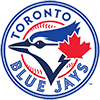 Toronto Blue Jays
Toronto Blue Jays
Catcher/Designated Hitter: Alejandro Kirk (97), Danny Jansen (180), Brandon Belt (494)
The Jays will certainly give other players the occasional rest at the DH spot, but most starts at these two positions should be claimed by these three players. Kirk didn't have a strong defensive reputation as a prospect, leading some to believe that his days in the field were numbered, but he actually graded out as a good pitch framer last season and should continue to justify starts behind the plate. Even if his defense falls off, his bat more than makes up for it. He walked more than he struck out last season while hitting .285/.372/.415. Jansen was limited to 72 games by oblique and finger injuries, but he hit 15 homers while slashing .260/.339/.516. His combination of a 13.1 percent barrel rate and 17.7 percent strikeout rate was excellent. Belt has dealt with more than his fair share of injuries as well. After hitting .285/.393/.595 in 2020 and 2021, he slipped to .213/.326/.350 last season, homering just eight times in 78 games. If his knee allows, he should be able to carve out a role at DH, at least against righties.
Second Base: Whit Merrifield (188), Santiago Espinal (594)
George Springer and Kevin Kiermaier aren't exactly pictures of health, so Merrifield could spend much of his time in the outfield later this season, but he appears to be battling with Espinal to be the primary second baseman on Opening Day. After four years as an above-average bat, Merrifield's wRC+ slipped to 90 in 2021 and again to 88 in 2022. He also stole just 16 bases last season, and at age 34, it's possible his primary fantasy asset isn't coming back. Espinal was a competent real-world player last season (2.3 fWAR in 135 games), but his fantasy appeal is limited. His .267/.322/.370 line was good for a respectable 99 wRC+, but it came with just seven homers and six steals.
Fifth Starter: Yusei Kikuchi (622), Ricky Tiedemann (655), Mitch White (744)
You could certainly argue that Kikuchi has pitched himself out of a rotation spot after he recorded a 5.19 ERA last year, his third ERA north of 5.00 in four MLB seasons. The Blue Jays felt that way last season, as he moved to the pen down the stretch, but they didn't dislodge him from the rotation with their offseason moves, so he seemingly enters the spring with the inside track on a starting role. He struck out five batters in two scoreless innings in his spring debut, so he's off to a good start in his quest to keep the job. White is his main competition, but he's behind schedule after dealing with a shoulder impingement over the winter. He struggled to a 5.45 ERA in 99 innings last season between the Blue Jays and Dodgers. Tiedemann has only made 18 professional starts, including none at Triple-A and just four at Double-A, but he's getting enough hype this spring that I couldn't leave him out, even if Toronto hasn't explicitly said he has a shot of breaking camp. Still, the Jays have shown with Alek Manoah and Alejandro Kirk that they're willing to promote prospects quickly, and Tiedemann's 38.9 percent strikeout rate and 2.17 ERA in his first professional season suggest he has at least an outside shot if he dominates this spring.
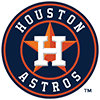 Houston Astros
Houston Astros
Center Field: Chas McCormick (513), Jake Meyers (739)
McCormick started 12 of Houston's 13 postseason games in center field, but the Astros are considering the position up for grabs this spring. He hit .245/.332/.407 (114 wRC+) with 14 homers and four steals in 119 games last season, producing a 10.2 percent barrel rate for the second consecutive year. Meyers didn't make his season debut until late June due to shoulder surgery and went on to struggle to a .227/.269/.313 line in 52 games, adding just a single homer and a single steal. The fact that the Astros haven't yet anointed McCormick the winner suggests they think Meyers can get back to pre-injury form. In 49 games as a rookie in 2021, he hit .260/.323/.438, striking out 30.7 percent of the time but also managing a 10.1 percent barrel rate.
 Tampa Bay Rays
Tampa Bay Rays
Catcher: Christian Bethancourt (323), Francisco Mejia (534)
Bethancourt completed one of the most remarkable career arcs in recent memory last season, suddenly emerging as a capable regular at age 30, having previously been a sub-par backup catcher, a two-way player project and a below-average KBO hitter. His 101 wRC+ last season, the product of a .252/.283/.409 slash line, was far from amazing but more than good enough to feature regularly behind the plate. His approach was poor, as he walked just 3.6 percent of the time, but he made loud contact, posting an 11.7 percent barrel rate. Mejia walked even less often (2.3 percent) and didn't hit the ball hard (2.7 percent barrel rate), resulting, unsurprisingly, in a poor .242/.264/.381 slash line. He did manage a 107 wRC+ in 2021, however, so there's a chance he wins the job if Bethancourt proves to be a one-year wonder.
First Base/Third Base/Designated Hitter: Yandy Diaz (278), Isaac Paredes (372), Harold Ramirez (462), Jonathan Aranda (585), Curtis Mead (644)
The entire premise of a Job Battles series doesn't exactly apply to the Rays, who have transcended beyond mundane human matters such as depth charts. Their collection of bat-first options will share time in a fluid arrangement across these three spots most nights, with possibly no true full-time role on offer. Diaz was handed a three-year extension in January after producing a career-high 146 wRC+ last season. Unfortunately, his fantasy value comes almost exclusively from his batting average (.296), as he homered just nine times and stole just three bases. He's only eligible at third base on Opening Day in some formats but is expected to spend most of his time at first this year. Paredes hit just .205 last season but homered 20 times in 381 plate appearances — not necessarily the result you'd expect from a player with a good strikeout rate (17.6 percent) but a below-average barrel rate (6.4 percent), but good enough for a 116 wRC+ for the 23-year-old.
Ramirez broke out to a similar 119 wRC+ in his age-27 season last year. His strikeout (16.6 percent) and barrel (4.8 percent) rates weren't too different from Paredes', but his groundball-heavy profile led to a .300 average and just six homers. He's the only member of this group who isn't an option at third base but is also the only one likely to spend much time in the outfield. Aranda struggled in 87 plate appearances as a rookie last year, hitting .192/.276/.321, but he hit .318/.394/.521 at the Triple-A level, homering 18 times in 104 games. Unlike the rest of the group, Mead has yet to reach the majors and he's played in just 24 Triple-A games, but he was placed on the 40-man roster in November and could have the talent to force the issue this spring. The 22-year-old Australian is a career .306/.376/.517 hitter in the minors.
Fifth Starter: Taj Bradley (632), Luis Patino (687), Yonny Chirinos (691)
Tyler Glasnow's oblique strain will open up a spot at the back of the Rays' rotation to begin the year. Bradley's lead on the ADP list reflects that he's the most exciting talent, but there's no guarantee he's up early. The 21-year-old rode a 26.5 percent strikeout rate and 6.2 percent walk rate to a 2.57 ERA in 28 starts across the two highest levels last season, but his numbers took a notable step back after his midseason promotion, so he still needs to prove himself before earning his MLB debut. Patino got to the big leagues ahead of schedule as a 20-year-old for the Padres in 2020, but he's been injured and ineffective since then, recording a 5.10 ERA in 114.2 innings. Chirinos has thrown 241.1 innings in the majors and owns a 3.54 ERA, with a strong walk rate (5.9 percent) offsetting a slightly sub-par 20.9 percent strikeout rate. He missed nearly all of last season recovering from Tommy John surgery but returned to throw seven innings in September.
Closer: Pete Fairbanks (208), Jason Adam (363)
It's been a few years, but Kevin Cash has used a traditional closer at times, with Sergio Romo saving 25 games in 2018 and Alex Colome saving 47 in 2017. It's not impossible that even the iconic committee team could see its saves leader match at least the former mark this year, especially if that pitcher is Fairbanks. He's already signed to a three-year deal, so the Rays have no motivation to manipulate his save count to save pennies in arbitration. A torn lat limited him to 24 innings, but he rode a ridiculous 38:3 K:BB to a 1.13 ERA and 0.67 WHIP. If the Rays maintain the committee approach that's seen their saves leader average a modest 11 over the last two years, Adams has a chance of earning a meaningful share. After tons of strikeouts and tons of walks led to a 4.44 across 24.1 innings for the Cubs the previous two seasons, he cut the strikeouts slightly to a still excellent 31.6 percent while suddenly walking just 7.2 percent of opposing batters and keeping the ball on the ground (45.7 percent) for the first time in his career. It all added up to a 1.56 ERA.
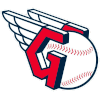 Cleveland Guardians
Cleveland Guardians
Catcher: Bo Naylor (329), Mike Zunino (500)
On the back of an upset run to a division title and an ALDS loss to the Yankees that went the distance, the Guardians' roster remains quite settled and quite young. Catcher is the only spot where there's anything close to a battle, and even there, the situation seems all but settled. I'm mostly including it so Cleveland fans don't think I've forgotten their team, as the Guardians have said that their preference is for Naylor to open the year in the minors. Manager Terry Francona left the door open for Naylor to "break the door down," though, and the 23-year-old could be talented enough to do that. He hit .263/.392/.496 with 21 homers and 20 steals in 118 minor-league games before going 0-for-8 with five strikeouts in a tiny cup of coffee. If he leads Team Canada on a Cinderella run while Zunino looks shaky in his return from thoracic outlet surgery, it's possible Naylor wins the job, but Zunino has been playing in Cactus League games since the opener. The surgery can be quite tough to come back from, so there's every chance Naylor steals the job from Zunino at some point, as the veteran has hit .188/.258/.417 over the last five years.
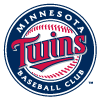 Minnesota Twins
Minnesota Twins
First Base/Left Field/ Designated Hitter: Nick Gordon (287), Alex Kirilloff (387), Joey Gallo (441), Trevor Larnach (668), Donovan Solano (743)
A mix of mainly bat-first players will compete for at-bats at these bat-first positions. Gordon is an exception to the "bat-first" label and should spend time at several spots around the diamond. His .272/.316/.427 line last season was good for a 111 wRC+, and while he managed a modest nine homers in 443 plate appearances, a 9.4 percent barrel rate suggests upside. Wrist injuries again derailed Kirilloff's season in 2022, limiting him to 45 games and eventually leading to season-ending surgery. He crushed the ball in 35 Triple-A games, homering 10 times and slashing .359/.465/.641, but he remains unproven at the big-league level. Gallo had at one point proved that his all-in approach did indeed work at the big-league level, hitting .217/.336/.533 from 2017 to 2019 with a pair of 40-homer seasons. His 2021 season was close to that standard, but it's been flanked by two years in which he recorded a wRC+ in the mid-80s. He hit just .160 with 19 homers last season. Larnach underwent season-ending abdominal surgery last June, and while he showed up to camp seemingly healthy, he was scratched with a lower-body injury Tuesday. In 481 career MLB plate appearances, he owns a 10.3 percent barrel rate but also a 33.5 percent strikeout rate, leading to a .226/.316/.371 line and just 12 homers. Solano, who doesn't fit into the left-field part of this picture, has been a league-average part-timer the past two seasons in San Francisco and Cincinnati, hitting a combined .282/.342/.395 (101 wRC+).
Closer: Jhoan Duran (143), Jorge Lopez (264)
There's no guarantee Minnesota names a closer this season, but if they do, it will presumably be one of these two. Duran is an elite talent, as you can tell by the fact that he's a reliever going inside the top-150 despite not having a guaranteed closer position. He was electric in his debut season, recording a 1.86 ERA in 67.2 innings of relief, a mark he backed up with a 1.96 SIERA. He only saved eight games, with the Twins often asking him to record six outs earlier in the game. As we've seen with other top-tier relievers like Josh Hader, sometimes a pitcher converts from that pattern of usage to a conventional closer role while still quite young. If the Twins prefer to keep Duran's usage flexible, Lopez could earn the bulk of the saves. He entered last season with a 6.04 ERA as a swingman but saved 19 games alongside a 1.68 ERA for the Orioles. Things took a turn after a trade to the Twins, however, as he recorded a 4.37 ERA and 18:14 K:BB in 22.2 frames for his new team, saving just four games.
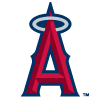 Los Angeles Angels
Los Angeles Angels
Catcher: Logan O'Hoppe (241), Max Stassi (627)
O'Hoppe should be the catcher of the future in Anaheim after arriving in the deal that sent Brandon Marsh to the Phillies, but there's no guarantee he opens the year in the majors. He got into five MLB games late last season but otherwise spent the year at the Double-A level, where he hit .283/.416/.544 with 26 homers and seven steals in 104 games. His 15.7 percent walk rate and 16.6 percent strikeout rate were both strong marks. The Angels need to be going all-in from the start this season, so there's no reason to manipulate O'Hoppe's service time, but there's also no guarantee he proves he's ready to skip Triple-A. If he needs more development time, Stassi will start, with Matt Thaiss (ADP 745) backing him up. Stassi hit .250/.333/.452 in 2020 and 2021, but fell to a .180/.267/.303 line last season.
Middle Infield: Brandon Drury (179), Luis Rengifo (330), Gio Urshela (459), David Fletcher (653)
Drury signed a two-year deal in December after a breakout age-29 season saw him hit .263/.320/.492 with 28 homers for the Reds and Padres. He spent most of his time at the infield corners last season and could play there again this year if Jared Walsh and Anthony Rendon continue to battle injuries, but his early playing time will probably come at the keystone. His arrival will force Rengifo to spend more time at short. After three poor partial seasons to begin his big-league career, Rengifo posted a 103 wRC+ last season, the product of a .264/.294/.429 slash line, adding 17 homers and six steals in 127 games. Urshela exclusively started at third base as a Twin last season but has MLB experience at both middle-infield spots. He hit .285/.338/.429 last year, marking his third above-average batting line in four seasons, but he added a modest 13 homers and one steal. Fletcher is the most proven shortstop of the bunch, having started 96 MLB games there, but his bat is among the lightest in the league. He's managed three career barrels in five big-league seasons, and while he cut his strikeout rate to a career-best 7.0 percent last season, he also hit a career-low .255.
Sixth Starter: Chase Silseth (715), Griffin Canning (729), Tucker Davidson (747), Jaime Barria (750)
The Angels may not use a strict six-man rotation this season, but they're expected to at least feature a sixth starter whenever they have a run of six games without an off day. Silseth looked overmatched in his seven-start debut last season, struggling to a 6.59 ERA, but it would have been a shock if he didn't look to be in over his head, as he'd made a grand total of eight professional appearances at any level before his debut. His 2.28 ERA and 34.4 percent strikeout rate in 15 starts for Double-A show why the Angels thought he was worth a shot and give reason to remain optimistic for his future. Canning hasn't pitched since the first half of the 2021 season due to back issues, but he's having a seemingly normal spring. While he had some prospect pedigree at one point, his 4.73 ERA in 43 career outings at the highest level (matched by a nearly identical 4.69 FIP) is unimpressive. Davidson recorded a 6.75 ERA and 33:35 K:BB in 52 innings for the Braves and Angels last season, though he did at least have better underlying numbers as a 26-year-old pitching in Triple-A. Barria spent last year in a long-relief role, starting just once. His 2.61 ERA came with a 6.0 percent walk rate but a poor 17.1 percent strikeout rate.
Closer: Carlos Estevez (289), Jimmy Herget (476), Matt Moore (694), Ryan Tepera (711)
Angels general manager Perry Minasian has said the Angels want Estevez to win the closer job but stopped short of announcing the competition over, so the righty will still have to prove he deserves the role this spring. Estevez managed a career-best 3.47 ERA last season, a mark that looks far better when considering he threw half his innings at Coors Field. He struck out just 19.7 percent of opposing batters at home, but that mark rose to 26.5 percent on the road, a figure that would look far less out of place in the ninth inning. If he fails to look closer-like this spring, or if the Angels wind up using a committee, Herget could see save chances. He saved nine games last year while posting a 2.48 ERA, but his 23.7 percent strikeout rate wasn't anything special. Moore could emerge as the top lefty in a committee if no one claims sole possession of the role, as he saved five games for the Rangers last year while recording a 1.95 ERA, or he could regress to being the pitcher who owned a 5.26 ERA over the previous seven seasons. Tepera earned six saves last season, including four in September, but his strikeout rate dipped to 20.3 percent after he finished north of 30 percent for two straight seasons.
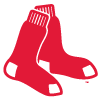 Boston Red Sox
Boston Red Sox
Catcher: Reese McGuire (549), Jorge Alfaro (592), Connor Wong (724)
The Red Sox dealt away Christian Vazquez at last year's trade deadline and didn't bring in any established starter over the winter, leaving a trio of uninspiring options fighting for playing time. McGuire has come to the plate 674 times in five big-league seasons, hitting .256/.301/.381 with 12 homers. His 20.5 percent strikeout rate should keep his batting average respectable, but it comes with a 3.0 percent barrel rate. Alfaro, who's merely in camp as a nonroster invitee and will be with Team Colombia for the World Baseball Classic, has essentially the opposite batted-ball profile. He matched McGuire's 90 wRC+ by hitting .246/.285/.383 for the Padres last season, with his 11.2 percent barrel rate somewhat offsetting a 35.8 percent strikeout rate. Wong split time with McGuire down the stretch last year but didn't have much to show for it, hitting .188/.273/.313 in 56 trips to the plate. His .288/.349/.489 line for Triple-A Rochester suggests he's ready for at least a backup role, however.
Middle Infield/Center Field: Adalberto Mondesi (241), Adam Duvall (342), Enrique Hernandez (414), Christian Arroyo (570)
Boston lacks clarity up the middle, thanks in large part to the elbow surgery that will keep Trevor Story out for at least half the year. That injury drove the Red Sox to acquire Mondesi from the Royals, but it looks like a long shot for the new arrival to recover from May ACL surgery by Opening Day. Assuming his speed returns after his latest procedure, he's the best base stealer in the league, swiping 58.4 bags per 600 plate appearances for his career. The problem, of course, is that he's never gotten anywhere close to 600 plate appearances and has only once in his seven seasons reached even the 300 mark. Until Mondesi is ready to go, Hernandez and Arroyo should handle the middle infield in most games, leaving Duvall the most likely center fielder. He's also a player of extremes, hitting .223/.279/.459 (97 wRC+) over the last two seasons, with his 14.9 percent barrel rate offsetting a 31.6 percent strikeout rate. Hernandez is the only member of this group who can play all three spots, which leaves him likely starting at shortstop to begin the year. His numbers dipped in his age-30 season, as his .222/.291/.338 line was good for a 75 wRC+, well below his 103 mark from the four previous campaigns. Arroyo is far from exciting but has produced a slightly above-average batting line in a part-time role for two straight seasons, hitting a combined .277/.323/.426 with 12 homers and six steals in 481 plate appearances.
Third/Fourth/Fifth Starter: Garrett Whitlock (282), Brayan Bello (373), Nick Pivetta (458), Tanner Houck (466), James Paxton (501)
The makeup of Boston's initial starting five won't become clear until we know who will be ready to go on Opening Day. Corey Kluber has a safe role, presumably, and Chris Sale is the obvious ace if his spring goes normally, which it has so far. After that, little is clear at this stage. Whitlock is working his way back from September hip surgery and is behind the pack to start camp, but he hasn't yet been ruled out for Opening Day. He rode a 26.4 percent strikeout rate and 4.8 percent walk rate to a 3.45 ERA as a swingman last year. While he's likely one of Boston's five best starters, his delayed buildup combined with his past experience in the pen could mean he spends at least the first few weeks of the year in the bullpen.
Bello, similarly, isn't at full strength to start the spring. He was shut down for a week in mid-February due to forearm soreness but has since been progressing without issues. There's no guarantee he wins a spot even if fully healthy, though, as his 2.76 ERA and 33.8 percent strikeout rate at the Triple-A level turned into a 4.71 ERA and 20.5 percent strikeout rate in the majors. Pivetta is a durable innings eater at this point of his career, though he's behind as well after battling COVID-19 shortly before camp. His 63 starts over the last two years tie him for ninth among all pitchers, but his 4.54 ERA and 1.34 WHIP in those seasons means his innings haven't been particularly productive. Houck cut his ERA from 3.52 to 3.15 last season but saw his strikeout rate drop from 30.5 percent to 22.7 percent despite pitching primarily out of the bullpen. Continuing the pattern, he's recovering from something, September back surgery in his case, but he's having a seemingly normal spring. Paxton wins the hotly contested award for Largest Injury Concern among this group, as his last big-league pitch was thrown on April 4, 2021. Since then, he's undergone Tommy John surgery and strained his lat, but he entered camp healthy. He owns a 3.59 career ERA but hasn't been healthy and effective since 2019.
 Texas Rangers
Texas Rangers
Left Field/Designated Hitter: Mitch Garver (440), Bubba Thompson (476), Robbie Grossman (648), Josh Smith (695), Brad Miller (719)
Texas' depth chart has good players penciled in many spots, but the mix of bats that will fight for time at these positions is less inspiring. Garver goes the highest among this group because he'll eventually gain catcher eligibility as Jonah Heim's backup, but he won't have it on Opening Day in NFBC leagues and many others. If he hits well, which his .248/.334/.479 career slash line suggests he can, he'll also spend a good bit of time at designated hitter. The rest of the group could fill either spot, though Thompson is unlikely to ever DH. His 18 steals in 55 games after his early-August debut last year won several fantasy leagues, but his bat doesn't look viable for a big-league regular. He hit .265/.302/.312, good for a 77 wRC+, and his 30.9 percent strikeout rate, 3.9 percent walk rate and 1.7 percent barrel rate were all awful. The arrival of Grossman cuts into Thompson's chances of earning regular at-bats. The switch-hitting veteran's $2 million deal doesn't guarantee him everyday at-bats, but if he proves he's the guy who hit .239/.354/.430 in 2020-21 and not the guy who hit .209/.310/.311 in 2022, he'll play often. Smith was a somewhat interesting prospect but showed good plate skills alongside very little else as a rookie, hitting .197/.307/.249 in 73 games. Miller is going the latest among this group but may start against most righties. He hit .236/.331/.480 in a platoon role from 2019 through 2021 but slipped to .212/.270/.230 last year and could slip out of the league at age 33 if he doesn't bounce back.
Closer: Jose Leclerc (219), Brock Burke (606), Joe Barlow (629), Jonathan Hernandez (636)
Leclerc entered spring as the presumed favorite to close for the Rangers, but the team hasn't confirmed him as the guy, and he's now dealing with neck discomfort. He looked good in his return from Tommy John surgery last year, saving seven games alongside a 2.83 ERA, but his peripherals added up to a less convincing 3.62 SIERA. If he's not at full strength, the team may go with a committee, but if they anoint someone else instead, one of the remaining trio could be a bargain. Burke excelled in his first extended taste of the majors last year, posting a 1.97 ERA (3.05 SIERA) in 82.1 innings as a multi-inning relief weapon. He could be used in any number of ways this season, including as a starter if injuries hit the team's injury-prone rotation or even as a traditional closer. Barlow recorded double-digit saves in both of his first two big-league seasons, but there's a big gap between his 2.81 ERA and 4.21 SIERA. He underwent wrist surgery in November but is already pitching this spring and is working on a splitter. Hernandez, like Leclerc, returned from Tommy John surgery last season to post a good ERA (2.97), but his 4.02 SIERA suggests that his strong groundball rate (62.4 percent) won't continue to offset his poor walk rate (13.0 percent) going forward.
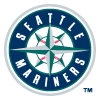 Seattle Mariners
Seattle Mariners
Left Field/Right Field/Designated Hitter: Teoscar Hernandez (72), Jarred Kelenic (303), AJ Pollock (514), Dylan Moore (534), Sam Haggerty (735), Kole Calhoun (749)
Hernandez will play nearly every day after slashing .283/.333/.519 across the last three seasons with Toronto, but the rest of this group remains somewhat uncertain. Everything seemingly hinges on Kelenic, the former über-prospect who's hit .168/.251/.338 through his first 147 big-league games. He's still just 23 and owns a .302/.372/.574 line in 116 career Triple-A games, so all that's left to prove is that he can make enough contact (29.9 percent career strikeout rate) in the majors. He homered three times in his first four games this spring, albeit not against the highest-quality opposition. Pollock signed a one-year, $7 million deal in January and is presumably set for regular at-bats, though there's no guarantee he earns them. He's now 35 years old, and while he owns a 113 wRC+ for his career, he slipped to 92 in that category last season, hitting .245/.292/.389.
If Kelenic or Pollock prove undeserving of everyday at-bats, some mix of the remaining options should feature regularly. Utility man Moore will also serve as infield depth and should start against lefties at a minimum. He stole 21 bases in 255 plate appearances last year while slashing .224/.368/.385, good for a 126 wRC+, but he's been sub-par against righties (92 wRC+) for his career. The switch-hitting Haggerty owns a .924 career OPS against lefties and a .531 OPS against righties, albeit in just 353 total MLB plate appearances. He has good speed (22 career steals) and could also help out in the infield. Calhoun is in camp on a minor-league deal and probably only has a shot at a regular role if Kelenic plays himself out of one. The 35-year-old has hit .208/.269/.343 over the last two seasons.
Closer: Andres Munoz (172), Paul Sewald (198), Diego Castillo (662)
The Mariners are unlikely to suddenly revert to traditional bullpen roles this season, but this trio accounted for 31 of the team's 40 saves last year and will likely do something similar this season. Munoz is working back from offseason foot surgery but is expected to be ready for Opening Day. He only saved four games last season but rode a 38.7 percent strikeout rate and 6.0 percent walk rate to a 2.49 ERA. Drafters have been slightly more excited about the 24-year-old Munoz than the 32-year-old Sewald, even though the latter is the one who saved 20 games last season. The veteran underwent minor procedures on his elbow and both heels over the winter but has been fully healthy since the start of camp. His 2.67 ERA last season came with a 29.8 percent strikeout rate and 7.0 percent walk rate. Castillo isn't drawing nearly the same interest from drafters after recording a more pedestrian 3.64 ERA and 23.9 percent strikeout rate last year, but he did finish second with seven saves and could add another handful this year unless Matt Brash (554) takes a step forward with his command and jumps ahead of him on the high-leverage depth chart.
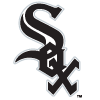 Chicago White Sox
Chicago White Sox
Right Field: Oscar Colas (388), Gavin Sheets (572)
For a team that finds itself in the bottom third of this article, the White Sox have a surprisingly settled lineup. All that remains is for Colas to prove himself to be big-league ready. The 24-year-old hit .314/.371/.524 across the three highest levels in his first stateside professional season, adding 23 homers in 117 games. Scouts like his power, but his past professional experience consists of just 67 games in Cuba and seven at the NPB level in Japan, plus some time in the Japanese minor leagues. He did not play in a professional game in 2020 or 2021. It would hardly be a shock if he proves to need more seasoning at the Triple-A level, where he played just seven games last season. If that's the case, Gavin Sheets should open the year as the right fielder. His poor glove would fit better at first base or designated hitter, however, and his .244/.304/.439 slash line in 589 career plate appearances isn't good enough to deserve everyday at-bats on its own.
Fifth Starter: Mike Clevinger (441), Reynaldo Lopez (524), Davis Martin (732)
The White Sox thought they had their rotation picture settled when they signed Clevinger to a one-year deal in November, only for news to emerge in January that the righty is under investigation for domestic violence and child abuse. He isn't currently on administrative leave, but that doesn't mean he won't be placed there in the future. Even if available, he may not be particularly effective, as he produced a 4.33 ERA and 18.8 percent strikeout rate in his return from Tommy John surgery last year and is now 32 years old. Lopez moved to the bullpen full-time last year and pitched very well, recording a 2.76 ERA and 0.95 WHIP in 65.1 innings. He could theoretically return to the rotation if Clevinger is suspended, though he may be needed in the pen again. Martin would be Clevinger's replacement if that's the case. In nine starts and five relief outings as a rookie last year, Martin produced an unimpressive 4.83 ERA and 17.8 percent strikeout rate, and his 6.11 ERA in 13 Triple-A starts hardly inspires confidence.
Closer: Liam Hendriks (337), Kendall Graveman (406), Reynaldo Lopez (524), Aaron Bummer (714)
This job is Hendriks' as soon as he's ready to pitch, but his primary focus right now is his battle with non-Hodgkin's lymphoma. While he's been able to participate in camp in some capacity, the White Sox aren't setting any timetable for his return to game action. Manager Pedro Grifol said Monday that the team wasn't planning on anointing a replacement closer in Hendriks' absence, meaning we'll presumably see some sort of committee involving the remaining names on this list. Graveman has 16 saves over the past two seasons, but his 3.18 ERA last year came with a modest 23.2 percent strikeout rate. Lopez, as discussed above, broke out as a reliever last season, though his 24.8 percent strikeout rate isn't classic closer material, either. Bummer could earn saves when lefties are due up in the ninth inning if the Sox stick with a strict committee approach. He owns a 3.14 ERA and 29.2 percent strikeout rate over the past two seasons.
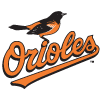 Baltimore Orioles
Baltimore Orioles
Second Base/Third Base/Shortstop: Gunnar Henderson (90), Jorge Mateo (229), Ramon Urias (466), Adam Frazier (559)
Henderson is still just 21 years old but is set to play every day after hitting .259/.348/.440 (125 wRC+) in 34 games as a rookie last season. Where he spends most of his time depends on who else earns at-bats in the Baltimore infield. Mateo played good defense at shortstop last season and finished second in the league with 35 steals, but he hit just .221/.267/.379 with 13 homers. Urias won a Gold Glove at third but can also play both middle-infield spots. His .248/.305/.414 line with 16 homers and one steal wasn't particularly exciting, but it was good for a 104 wRC+. Frazier signed a one-year deal in December and should spend time at second base and potentially the outfield corners. He struck out just 12.1 percent of the time last year but hits the ball with such little authority (1.5 percent barrel rate, 23.8 percent hard-hit rate) that he managed merely a .238/.301/.311 line and three homers.
Third/Fourth/Fifth Starter: Grayson Rodriguez (195), Kyle Bradish (415), DL Hall (561), Dean Kremer (582), Tyler Wells (614), Austin Voth (716)
Innings eaters Kyle Gibson and Cole Irvin have seemingly safe rotation spots, but the rest of Baltimore's rotation remains unsettled. Rodriguez is expected to join them, but given that he's yet to make his big-league debut and missed three months last year with a strained lat, he'll have to confirm his health and readiness this spring to lock in a spot. His two scoreless innings in his first spring start Thursday against the Tigers represent a great first step. Bradish struggled to a 7.38 ERA in his first 10 big-league starts last year and was demoted in mid-June, but he returned in late July to record a 3.28 ERA in 13 starts the rest of the way. If his 21.8 percent strikeout rate in the majors can get closer to his 29.1 percent career mark in the minors, he could reach another level. Hall pairs great stuff with poor command, leading to a 5.93 ERA in 11 outings as a rookie last year. He has substantial relief risk and won't be built up to start by Opening Day after dealing with a lumbar injury prior to camp.
Kremer recorded a 3.23 ERA in 22 outings (21 starts) last year, but that came with a much worse 4.54 ERA and a 17.0 percent strikeout rate. Wells moved from the bullpen to the rotation last year and finished with a passable 4.25 ERA in 23 starts, but his strikeout rate dropped 11 points to 18.0 percent. He also averaged just 4.5 innings per start. Voth allowed more than a run per inning in 19 relief appearances for Washington to start the year but recorded a 3.04 ERA in 22 appearances (17 starts) after moving to Baltimore, albeit with mediocre peripherals and a 4.24 SIERA.
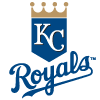 Kansas City Royals
Kansas City Royals
Second Base: Michael Massey (511), Nicky Lopez (582)
With Hunter Dozier reportedly locked in at the hot corner despite hitting .226/.289/.391 over the last two seasons, the Royals only have one infield spot up for grabs this spring. Massey earned regular at-bats down the stretch last year, hitting .243/.307/.376 (93 wRC+). He homered just four times in 52 games, but his 13.0 percent barrel rate suggests some power upside. Lopez has arguably the least power upside in the league, homering zero times in 480 plate appearances last year and managing five total homers across 452 career MLB games. He makes plenty of contact, striking out 13.1 percent of the time in two straight seasons, but his .300 average in 2021 fell all the way to .227 last season as his BABIP dropped from .347 to .265.
Outfield/Designated Hitter: MJ Melendez (98), Edward Olivares (420), Drew Waters (554), Franmil Reyes (568), Nick Pratto (644), Kyle Isbel (650), Nate Eaton (680)
Melendez will fill one of these spots frequently when not backing up Salvador Perez behind the plate (and Perez in turn will DH frequently), but the rest of the group remains rather unsettled. Olivares has drawn the most fantasy interest. He's hit a modest .260/.304/.399 with 12 homers and four steals in 123 big-league games but managed a career-best 110 wRC+ in 53 games last year. Waters hit .240/.324/.479 with five homers in his 32-game debut last year, but he struck out 36.7 percent of the time. An oblique strain is expected to keep him out for Opening Day, but he may not miss much time beyond that.
Reyes had to settle for a minor-league deal after hitting .221/.273/.365 last season, but he hit .260/.325/.503 over the previous four seasons and is just 27 years old. He could start frequently at designated hitter or an outfield corner if he returns to his previous form. Pratto won't play the outfield but could DH frequently as well, though his .184/.271/.386 line and 36.3 percent strikeout rate as a rookie were worrying marks. They came in just 49 games and were accompanied by a 12.5 percent barrel rate, however, so there's certainly a chance Pratto figures it out this season. Isbel is going near the back of this group in drafts but seems to have the inside shot on the center field job after Waters' injury. He hit just .211/.264/.340 in 106 games last year, combining poor plate skills with a 4.9 percent barrel rate. Eaton swiped 11 bags in 44 games as a rookie while slashing a respectable .264/.331/.387, but he homered just once.
Fourth and Fifth Starter: Daniel Lynch (671), Ryan Yarbrough (697), Kris Bubic (739), Brad Keller (741)
The Royals' pitcher-friendly park and the arrival of new pitching coach Brian Sweeney, previously part of a successful coaching staff in Cleveland, makes these starters interesting late darts, but none of them have had much recent big-league success. Lynch has some prospect pedigree but owns a 5.32 ERA in 42 career big-league starts. His 5.13 ERA last year was quite poor, and his 4.34 SIERA hardly suggests he's about to dominate, though his 20.3 percent strikeout rate at least leads this uninspiring group. Yarbrough signed for one year and $3 million after spending the last five seasons with the Rays. He recorded a 3.94 ERA in the first three of those seasons but slipped to 4.90 in the last two years, striking out just 17.7 percent of opposing batters. Bubic made 28 appearances (27 starts) last year, but his 18.7 percent strikeout rate and 10.7 percent walk rateled unsurprisingly to a 5.58 ERA. Keller's 16.5 percent strikeout rate was the worst among this quartet and led to a 5.09 ERA. He owned a 3.50 ERA from 2018 to 2020 but has now finished over 5.00 for two straight years.
Closer: Scott Barlow (142), Aroldis Chapman (387)
Barlow is likely the ninth-inning man in Kansas City, having saved a career-high 24 games last season while posting a career-low 2.18 ERA and 1.00 WHIP. The arrival of Chapman complicates that somewhat, however, as a team probably doesn't sign someone with 315 career saves unless they're at least open to the idea that he'll claim the job. Chapman pitched his way out of the closer role in New York last season, however, with his ERA jumping to 4.46 as his walk rate spiked to 17.5 percent and his strikeout rate dropped 13 points to 26.9 percent. He's also already had an eventful spring, requiring stitches on a split lip and cracking his tooth after reportedly slipping and falling at home, but he's nearly ready for game action.
 Detroit Tigers
Detroit Tigers
Third Baseman: Matt Vierling (612), Nick Maton (711), Ryan Kreidler (743), Tyler Nevin (751)
The Tigers failed to take the intended step forward last season, and much remains up for grabs this year. Vierling showed some flashes the last two seasons with the Phillies and did start five games at the hot corner last year, but he's likely to spend most of his time in the outfield and will be discussed below. Maton, who came over in the same trade, seemingly has the inside shot on the job. In 216 career plate appearances at the highest level, he owns a respectable .254/.330/.434 slash line (108 wRC+), but it's taken a .350 BABIP to get him there. He strikes out 31.5 percent of the time and owns a modest 6.4 percent barrel rate. Still, the bar is low for him to earn the job given the quality of the competition. Kreidler appeared in 26 games as a rookie but hit just .178/.244/.233. He's unlikely to earn more than a utility infielder role. The same can be said of Nevin, who was designated for assignment by the Orioles in December. He's hit .205/.312/.292 with three homers and zero steals in 64 career MLB games.
Left Field: Kerry Carpenter (482), Akil Baddoo (559), Matt Vierling (612)
Neither Riley Greene nor Austin Meadows was particularly effective last season, but we'll pencil them into center and right field, leaving three players battling for time in left. Carpenter was a 19th-round pick in 2019 but has done nothing but hit as a professional, slashing .289/.355/.540 in 257 career minor-league games and .252/.310/.485 in a 31-game cup of coffee last season. His 6:32 BB:K in the majors was poor, but he walked as often as he struck out in Triple-A. Baddoo will likely be his top competition for at-bats against righties. The 24-year-old hit .259/.330/.436 as a rookie in 2021 but followed it up with a .204/.289/.269 line and a midseason demotion last year, spending more than two months in the minors. Vierling should start against lefties as the lone right-handed bat of the trio, and it's not impossible to envision him carving out a larger role. His numbers in 434 career MLB plate appearances are mixed. He's slashed just .260/.309/.374 (88 wRC+) with eight homers and owns a low 4.8 percent barrel rate, but his 48.2 percent hard-hit rate suggests that more power is in there somewhere.
Closer: Alex Lange (388), Jason Foley (739), Jose Cisnero (746), Will Vest (750)
With Gregory Soto, Joe Jimenez, Andrew Chafin and Michael Fulmer all pitching elsewhere this season, the ninth inning in Detroit is suddenly wide open. The top candidates' respective draft prices reflect the fact that Lange is widely seen as the top choice, but the Tigers have yet to appoint him the winner. Lange's 30.3 percent strikeout rate and 3.41 ERA last season would be decent fits for the role, though he also walked 11.4 percent of opposing batters. Foley has drawn the second-most interest among Detroit relievers, but his 16.8 percent strikeout rate would look odd in the ninth. He was effective enough despite that lack of whiffs, though, as his 4.3 percent walk rate and 57.1 percent groundball rate helped him to a 3.88 ERA and 3.36 SIERA. Cisnero saved four games for the Tigers in 2021 but was limited to 25 innings last year due to shoulder problems. His 1.08 ERA was excellent, but his 23:19 K:BB and 5.19 SIERA told a very different story. Vest is the only Tiger remaining on the roster who saved a game last season, but his 4.00 ERA and 23.2 percent strikeout rate fit better in middle relief.
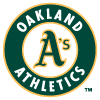 Oakland Athletics
Oakland Athletics
Third Base: Aledmys Diaz (521), Jace Peterson (593), Jordan Diaz (703), Kevin Smith (749), Jonah Bride (750)
A platoon between the veterans who occupy the first two spots on this list may be Oakland's primary plan for the hot corner this season, though neither player's track record locks him into regular at-bats. Diaz has been consistently slightly below average at the plate in recent seasons, posting a wRC+ between 94 and 97 for three consecutive years. That fit fine in a bench role in Houston but leaves him overmatched as a regular. The left-handed Peterson could start against righties, but he's similarly finished with a wRC+ of 98 and 96 in the last two seasons. He's stolen a combined 22 bases in 630 plate appearances in those years, however, which gives him a bit more fantasy appeal should he win the role. Diaz leads a trio of younger options vying for at-bats. His .265/.294/.327 line in 15 games after his mid-September call-up last season was nothing special, but he's just 22 years old and hit .326/.366/.515 in the two highest levels of the minors. Smith earned at-bats early last season but sputtered to a .180/.216/.302 line in 47 games. He was demoted in mid-June and never returned. Bride got into 58 games as a rookie but showed plate skills and little else, hitting .204/.301/.247 with one home run.
Center Field: Esteury Ruiz (289), JJ Bleday (672), Cristian Pache (746)
Drafters clearly want Ruiz to win this job, and the Athletics presumably didn't acquire him in the three-team Sean Murphy deal unless they intended to see what he can do, but he's yet to officially earn a starting spot. He stole a ridiculous 85 bases in 114 games across the three highest levels of the minors last season but produced a .452 OPS in a tiny sample of 36 MLB plate appearances. His .332/.447/.526 line as a minor-leaguer last year gave him plenty of opportunities to run, but he won't walk nearly as much in the majors if pitchers aren't afraid of his power. Bleday showed power in the minors but hit just .167/.277/.309 in 65 games as a rookie for Miami last season. As a lefty, he'd have the edge if this situation turns into a platoon. Pache was the big trade acquisition of the previous winter, arriving from Atlanta in the Matt Olson trade. He was a glove-first prospect but his glove couldn't overcome his .166/.218/.241 line in 91 games last season, and he remained a poor hitter (.248/.298/.389) during his 41 games for Triple-A Las Vegas.
Entire Rotation: Ken Waldichuk (462), Kyle Muller (562), Shintaro Fujinami (606), JP Sears (620), Paul Blackburn (641), James Kaprielian (673), Drew Rucinski (675)
It's hard to make the case that anyone in Oakland deserves a locked-in rotation spot, so I'm considering the whole thing up for grabs for the purposes of this article. Waldichuk is atop the list, but his 4.93 ERA in seven career MLB starts isn't exactly an ace's resume. In 234.1 career innings in the minors, however, he owns a 36.2 percent strikeout rate and a 3.03 ERA. Muller owns a similarly unimpressive 5.14 ERA in 12 career big-league outings (11 starts), but he struck out 29.3 percent of foes en route to a 3.41 ERA in 23 Triple-A starts last year. Fujinami is set for his MLB debut after coming over from Japan this winter. Once a top prospect alongside the young Shohei Othani, he struggled with control throughout his time in Japan and wasn't always able to maintain a rotation spot, though he cut his walk rate to 7.5 percent last year and produced a 3.38 ERA. Sears has thrown 70 MLB innings as a swingman and owns a 3.86 ERA, but that came with a low 17.7 percent strikeout rate. Like Waldichuk and Muller, though, he's shown strikeout stuff in the minors, posting a 30.7 percent strikeout rate for his career.
Blackburn is fifth on the ADP list among this group but probably has the safest job. He added a tick to his fastball last year and cut over a run and a half from his ERA, but that was still only good enough for a 4.28 mark. Kaprielian leads these pitchers with 257 career major-league innings, and his 4.20 ERA is competent enough, but his underlying numbers backed up last year, resulting in a 5.04 SIERA. He's recovering from November shoulder surgery but has already advanced to pitching in a simulated game. Rucinski is a 34-year-old who owns a 5.33 ERA in 54 MLB innings, the last of which came in 2018. He's been one of the best pitchers in Korea for the past four seasons, however, recording ERAs between 2.97 and 3.17 in all four years for the NC Dinos.
Closer: Trevor May (463), Domingo Acevedo (605), Dany Jimenez (618), Zach Jackson (697)
The Athletics probably won't win many games this season, and anyone who pitches well enough to close games in the first half is at risk of being dealt elsewhere at the deadline, finishing the year as a setup man. Drafters haven't shown much interest in any Oakland reliever as a result, but May's $7 million deal seemingly gives him an edge in the ninth inning. He has at least one save in five straight seasons but has only 12 for his career, so it's not as if he's a proven closer. He also saw his ERA jump to 5.04 last year while missing time with a triceps injury. Acevedo recorded four saves and a 3.33 ERA last season, though his 21.8 percent strikeout rate is quite low for a closer. A similar story can be told about Jimenez, who finished with a 3.41 ERA and 23.4 percent strikeout rate, but he led the team with 11 saves last year and could again earn his manager's trust. Jackson picked up three saves as a 27-year-old rookie. His 3.00 ERA and 33.2 percent strikeout rate were both strong, but he walked 16.36 percent of opposing batters.










